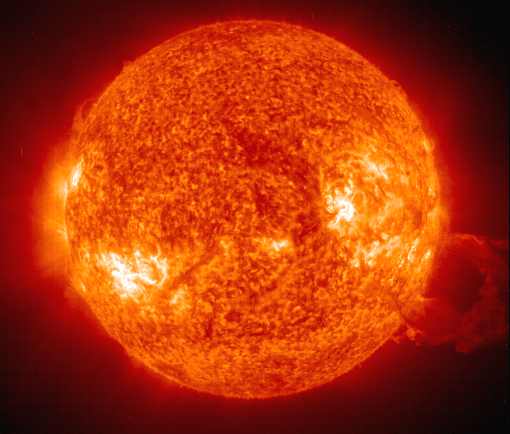Going where the blogs take me and I should add a DISCLAIMER: All the pictures featured on this page belong to their respective owners. If you see your picture featured and don't want it to be, email me with link and I will take it down right away.
Tuesday, January 05, 2010
Solar flares
Did you know a solar flare can make your toilet stop working?
.
That's the surprising conclusion of a NASA-funded study by the National Academy of Sciences entitled Severe Space Weather Events—Understanding Societal and Economic Impacts.
.
In the 132-page report, experts detailed what might happen to our modern, high-tech society in the event of a "super solar flare" followed by an extreme geomagnetic storm.
.
They found that almost nothing is immune from space weather—not even the water in your bathroom.
.
The problem begins with the electric power grid.
.
"Electric power is modern society's cornerstone technology on which virtually all other infrastructures and services depend," the report notes.
.
Yet it is particularly vulnerable to bad space weather.
.
Ground currents induced during geomagnetic storms can actually melt the copper windings of transformers at the heart of many power distribution systems.
.
Sprawling power lines act like antennas, picking up the currents and spreading the problem over a wide area.
.
The most famous geomagnetic power outage happened during a space storm in March 1989 when six million people in Quebec lost power for 9 hours:
.
According to the report, power grids may be more vulnerable than ever.
.
The problem is interconnectedness.
.
In recent years, utilities have joined grids together to allow long-distance transmission of low-cost power to areas of sudden demand.
.
On a hot summer day in California, for instance, people in Los Angeles might be running their air conditioners on power routed from Oregon.
.
It makes economic sense—but not necessarily geomagnetic sense.
.
Interconnectedness makes the system susceptible to wide-ranging "cascade failures."
.
To estimate the scale of such a failure, report co-author John Kappenmann of the Metatech Corporation looked at the great geomagnetic storm of May 1921, which produced ground currents as much as ten times stronger than the 1989 Quebec storm, and modelled its effect on the modern power grid.
.
He found more than 350 transformers at risk of permanent damage and 130 million people without power.
.
The loss of electricity would ripple across the social infrastructure with "water distribution affected within several hours; perishable foods and medications lost in 12-24 hours; loss of heating/air conditioning, sewage disposal, phone service, fuel re-supply and so on."
.
"The concept of interdependency," the report notes, "is evident in the unavailability of water due to long-term outage of electric power--and the inability to restart an electric generator without water on site."
.
NASA Science
Subscribe to:
Post Comments (Atom)

No comments:
Post a Comment